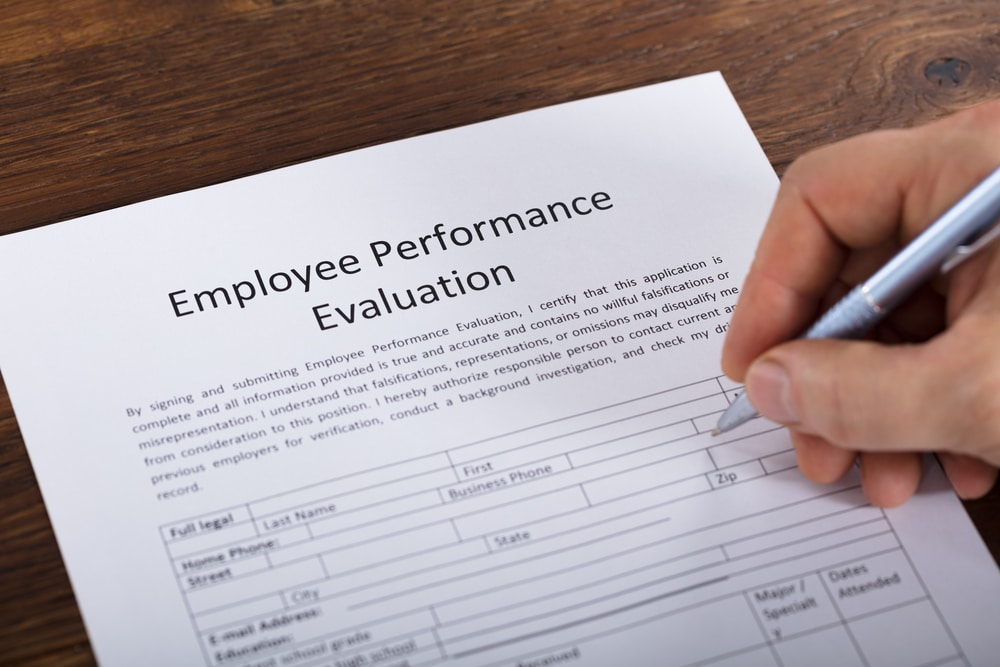Why is it that when many of us think about performance management, we see it as a necessary evil rather than a powerful tool which can help employees and organisations thrive?
Statistically, 95% of managers report that they are ‘unhappy’ with traditional once-a-year performance reviews. Managers spend, on average, 210 hours a year on performance management, with employees spending 40 hours a year. Besides, 51% of employees think annual reviews are inaccurate, and 53% feel that once-a-year reviews do not motivate them.
What is more, is that 98% of businesses know that performance management is important. Still, only 64% have an effective approach, and only 8% of organisations think annual appraisals add value.
The truth is that many managers and employees alike feel that annual performance reviews are ineffective, inefficient, and demotivating. There are many factors that might contribute to these feelings (luckily, they are fixable) and, in reality, performance management is one of the most important processes in achieving key individual and organisational outcomes.
The good news is that the flaws associated with annual performance reviews have been acknowledged by many and that the main solution was in front of us all along – instead of providing feedback to your employees only once or twice a year during the annual or bi-annual performance reviews, feedback should be given throughout the year, on an ongoing basis. Through continuous performance management reviews, the manager and the employees will develop a healthy, trusting and more authentic workplace relationship.
Table of Contents
What is the difference between the annual or bi-annual performance review/appraisal and the continuous performance review?
In a nutshell, both types of reviews aim to achieve the same thing. According to Michael Armstrong, the author of Handbook of Performance Management, “performance management is the continuous process of improving performance by setting individual and team goals which are aligned to the strategic goals of the organisation, planning performance to achieve the goals, reviewing and assessing progress, and developing the knowledge, skills, and abilities of people.”
The main difference between the two is that while the annual or bi-annual performance reviews are retrospective, in the sense that they look at the employee’s performance over a set and past period of time and the goals set at the beginning of the year/middle of the year, continuous performance management is a 360° process, that involves regular check-ins between employees and managers and frequent, real-time feedback which helps the employee (or manager) take the necessary steps in improving performance for the future.
While continuous performance reviews offer incredible benefits for employees, managers and organisations, their purpose is not to replace annual or bi-annual performance reviews. While traditional performance reviews evaluate progress on established goals and serve as a benchmark for compensation and promotion decisions, continuous performance reviews are much more flexible and are meant to support the formal review conversations and better ensure that the established goals are met.

The importance of having a continuous performance management process in your company
1. Provides better clarity on the goals of the organisation
According to recent research, only 40% of employees across organisations know what the goals of their company are – this means that 60% of employees are investing time and effort in activities that might not contribute to the objectives that the company is focusing on. Through continuous performance management, the company can ensure that all departments, teams and employees are moving towards the same organisational direction at all times and can pivot if needed.
2. Helps gain valuable insights.
Through regular, open, and honest conversations between managers and employees, continuous feedback helps to address issues and removes barriers before they become problems that threaten an employee’s or team’s success.
3. Improves employee engagement and reduces employee turnover
According to Forbes, employees who feel their voices are heard are 4.6 times more likely to feel empowered to perform their best work. Engaged employees are 44% more productive than workers who merely feel satisfied, and companies with highly engaged workforces are 24% more profitable. Since employee engagement and employee turnover work hand in hand, research shows that companies that give feedback consistently to their employees have 14.9% lower turnover rates than companies that do not.
4. Leads to the development of new training strategies and mentorship activities
Every employee has areas for improvement. Regular check-ins with employees help managers identify early on the challenges that employees are facing and allow managers to act accordingly by making available to the employee the necessary tools to help pivot them further in their job and their career.
Other benefits include:
- contributing to the setting and refining of the quarterly OKR goals
- providing a comprehensive picture of the employee’s performance throughout the year
- helping managers and employees better prepare for the mandatory annual reviews
The best solution: a hybrid approach
By merging regular, annual, or bi-annual reviews, with real-time, continuous reviews, you are ensuring that the overall performance management system is transparent, consistent, unbiased and prioritised all year around.

How to implement a great formal performance review system in your organisation
1. Describe the company’s expectations from the beginning
The first documentation you will need to create for each employee is a detailed job description that doesn’t leave much space for misinterpretation. Sure, as employees evolve and grow in their roles, their responsibilities would also expand, but continuing to have a clear job description for each position within the company sets the company’s expectations from each employee and provides an accurate appraisal of the employee’s work.
Simply sharing the job description with the employee at the start of their role is not enough – the manager should ensure that the job description is discussed with the employee and identify any areas that the employee might require additional support to complete.
2. Based on your overall company and department goals, determine SMART goals for your employee to achieve
One of the most important steps in performance reviews, if not THE most important, is to set up the SMART goals that the employee would be aiming to achieve. The goals need to be Specific, Measurable, Attainable, Relevant and Timely. To effectively determine these goals, you will need to ensure that they are directly contributing to the departmental and the company’s objective for the year and that they are addressing the major job responsibilities of the employee whilst also ensuring that they are contributing to the employee’s career development, by making them stretchy, motivational, and achievable. Both the employee and the manager should be aligned when setting up goals, and the employee should have the freedom to set up their own goals as well.
3. Replace bi-annual reviews with quarterly performance reviews
There are several reasons why conducting formal performance reviews at least once every three months is important:
- It ensures that the goals are not forgotten and are being worked towards.
- It helps the employee and the manager break down how they will achieve the goals in more manageable steps.
- As the goals are being achieved, the employee and manager can set new goals.
- If the goals are no longer relevant (this should not happen often), you and the employee can scrap these goals and set new ones in a timely matter.
Additionally, conducting formal performance reviews at least once every three months allows the manager to resolve any grievances an employee might have, give the manager the chance to manage promotion expectations more often and assess any training needs, whilst also strengthening the bond between the manager and the employee.
4. Ensure your performance review meetings are a two-way communication
It goes without saying that performance reviews need to be engaging, transparent and collaborative and the employee should be as invested in preparation for these meetings as the manager. If you are a manager and the performance reviews you give are just instances when you summarise what an employee is doing right or wrong, you are missing out on their potential impact on performance. Whilst the manager and the employee are working towards the same outcome, the approach and involvement in reaching the goals would differ.
Throughout performance reviews, an employee might like to know how well they are doing, what areas can be improved upon, what opportunities for career advancements they have, and what company goals they should focus on next. At the same time, the manager would need to find out how the employee sees their performance, what are the obstacles that are stopping the employee from reaching their full potential, what support does the employee need and discuss anything that might need to be addressed.
None of these areas can be answered by the manager or the employee without the support of one other. As such, the review needs to be interactive, and both need to prepare to talk and listen actively.
5. Encourage your employee to reflect often on their achievements
Before the performance management reviews, ensure that the employee has time to reflect on their performance and write a self-assessment. As some employees might struggle to remember their achievements, consider sending to the employee, prior to your meeting, a series of questions to answer as a guide. Some of the questions that might help the employee to ponder are:
- Which tasks or projects have you found the most satisfying since your last review?
- What do you enjoy most about the work you do?
- Did you encounter any challenges these past months? If so, what steps did you take to overcome them?
- What company or personal goals have you accomplished so far?
- In which areas do you feel you have the most growth potential?
- What projects or goals would you like to focus on in the next three months?
- What are the skills or knowledge your colleagues rely on you to provide?

Make sure you have an easy-to-follow performance review template in place that makes the process straightforward.
If you were to Google ‘performance review templates’, you would find more than 62 million results. The great news is that many templates and online systems can be inspired from or used for your company’s performance reviews. However, if you want to ensure that your company’s performance review template fits your organisation’s and employees’ needs, you might need to customise it further.
When putting together the performance review template, there are many variables you might want to think about, such as:
- How often will the performance reviews take place, and what would be the review period (one month, quarterly, bi-annual, annual)?
- Should professional development goals be included as part of the performance review, or should they be separate?
- How many goals should each employee have? Should each employee have the same number of goals, or should they have a minimum and a maximum threshold of goals instead?
- What rating system would you use?
- Should your organisation introduce peer reviews as part of the performance review for better transparency? If peer reviews are welcomed, should they be given before each review meeting, bi-annually or annually?
There are many more factors you would need to consider. Still, by answering these questions, you will be able to determine better what your organisation’s performance review should look like and what type of template would better support it.
Documenting employee behaviour and performance problems is very important.
As a manager, there will be times when you will have to deal with employee issues and performance problems.
Documenting employee behaviours and performance problems is critical for several reasons.
Firstly, it gives you a written record of the employee’s tenure in the company. Secondly, it helps you show beyond doubt the employee’s track record regarding their compliance with policies specified in the employee handbook and job specification. Thirdly, the documentation of performance or behaviour issues will give the HR and management teams a detailed history of the employee’s performance and improvement or lack of change over time.
Documenting performance or employee issues helps protect your company the liability from legal action in case of dismissal, as it would provide all the necessary proof to support the management’s decision of whether the employee should be terminated or disciplined.
Three steps to implement an effective continuous feedback system throughout your organisation
Continuous feedback needs to become a regular practice to maximise the chances of your employees meeting their goals and achieving their career professional development whilst also making them feel valued, appreciated and motivated.
According to a study by Forbes, almost 75% of employees consider feedback important, but less than a third receive it, and 69% of employees said that if they felt appreciated, they would work harder. Besides, according to a study by Gallup, companies that give continuous feedback experience 14.9% lower turnover rates.
The benefits are clearly great, but how do you make continuous feedback a regular and natural process within your team?
1. Create a safe environment
Creating a work culture where the employee can easily admit mistakes and seek help or advice is important. But before you should expect employees to be able to admit mistakes easily or naturally come to you for suggestions or advice, you need to ensure that your company culture is a safe environment. To achieve this, consider whether you are taking the necessary steps to create a positive work environment. Is your team showing appreciation for each other? Do they understand each other’s way of working? Are you celebrating team wins or spending time together outside of work? Are your employees trusting you, and do you trust them? For your employees to easily admit and speak to you about mistakes or challenges they are experiencing, they need to feel safe to do so.
2. Ensure that your feedback is not biased
When it comes to sharing constructive feedback, it should be based on facts and statistics, without any assumptions that could be biased and reinforced by our own favouritism, preconceptions, prejudices, or stereotypes.
To ensure that your feedback is based on facts, you should rely on tracking the actual progress done by the employee by using the chosen performance review template or by creating your system of tracking your continuous feedback. Whatever approach you will utilise, make sure that you are writing everything down and you are not relying on your memory because managers who tend to rely on their memory to conduct reviews instead of tracking the actual progress of employees could be considered biased.
3. Managers should consider themselves coaches.
Just like football coaches cannot help their players win on the field if winning is not in the back of their minds, managers are not supporting their employees well if they are not coaching them on the steps they need to take to succeed. The easiest way to help your employees is by giving them frequent feedback in real time – this way, the employee would be able to implement it straight away and not wait until your next performance management review.
Performance management remains and will continue to be one of the most important processes in achieving key individual and organisational outcomes.
By adopting a continuous feedback system at your company, you are not only making the entire performance review system more transparent, natural and engaging, but you are also creating and fostering a safe work culture where employees are nurtured, valued, motivated and set up for success.

